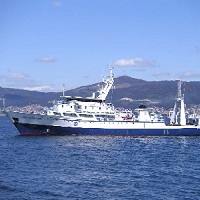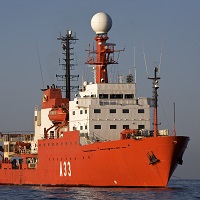Keyword
75
22 record(s)
Type of resources
Categories
Topics
INSPIRE themes
Keywords
Contact for the resource
Provided by
Years
Formats
Status
-

- Informacion en tiempo real de las estructuras de temperatura y salinidad de las capas superiores e intermedias de los oceanos.\n- Variabilidad de masas de aguas y calculos de transportes.Gyroscope
-

Seasonal survey to study the annual and interannual variability of ocean circulation in the eastern border of the North Atlantic sub-tropical gyre
-

CINECA II (August-1973)
-

Sahara 2/1971
-

Seasonal survey to study the annual and interannual variability of ocean circulation in the eastern border of the North Atlantic sub-tropical gyre.
-

- Levantamientos hidrograficos sistematicos y exhaustivos que permitan el cartografiado total de sus fondos\n- Realizar exploraciones geofisicas que permitan determinar su constitucion y fisiografia \n- Llevar acabo coampa?as oceanograficas sistematicas para el estudio de los procesos fisicos\n- Procesar y tratar los datos obtenidos en las campa?as para la obtencion de mapas, cartas e informesen los cuales se definan las caracteristicas y el potencial economico de la ZEE\n- Hacer tratamiento informatico necesario para la integracion de datos en bancos de datos interactivos.\n- Poner a disposicion de la comunidad cientifica e industrial toda la informacion, salvo la restringida por afectar a la seguridad nacional.
-
CR Corica 0903 Eastern Boundary Current; Antartic Intermediate Water; Thermohaline Circulation; North Atlantic Oscillation; Climate Variability and Predictability; Geostrophic Transport: inverse model; Total Transport.
-
The aims of this cruise were to elucidate the processes responsible for controlling iodocarbon concentrations and provide a dataset that can be used to develop modelled estimates of iodocarbon sea-air fluxes in tropical Atlantic waters.
-
The cruise is a component of RAPID-WATCH, whose objectives are: to deliver a decade-long time series of calibrated and quality-controlled measurements of the Atlantic MOC from the RAPID-WATCH array and; to exploit the data from the RAPID-WATCH array and elsewhere to determine and interpret recent changes in the Atlantic MOC, assess the risk of rapid climate change, and investigate the potential for predictions of the MOC and its impacts on climate. Objectives of this cruise: to recover, calibrate and redeploy moorings from the eastern boundary and mid-Atlantic ridge subarrays of the 26.5N line of RAPID moorings.
-
The objective of cruise JC103 was to service the moorings of the RAPID 26°N project that are deployed to monitor the Atlantic Meridional Overturning Circulation. For each mooring instruments were recovered, data were downloaded and instruments were redeployed. A number of CTDs were made to calibrate the instruments from the moorings. During passage from port of Spain to Nassau trial CTDs were completed in the waters of the Turks and Caicos Islands. After departing Nassau on 29th April work commenced on the western boundary sub-array comprising of moorings WBADCP, WBAL, WB1, WB2, WB2l, WB2h, WB4 and WB4L. The ship returned to Nassau on 6th May to disembark one person before sailing east once again. The final mooring of the wester sub-array was serviced on 8th May before continuing east to the mid-Atlantic Ridge (MAR) sub-array. Work on the MAR sub-array commenced on 13th May at mooring MAR0. The other moorings in this sub-array were MAR1, MAR1L, MAR2, MAR3 and MAR3L were all completed by 18th May. On the following day the NOG mooring was deployed and as the ship transited to the astern sub-array the first of 5 Argo floats was deployed on 21st May. The eastern boundary sub-array starts at EB1, which was serviced on 23rd May. Following this moorings at EB1L, EBHi, EBH1, EBH2, EBh3,EBh4 and EBH4L in the following days up until 31st May. A number of CTDs were completed form 31st may to 2nd June.
 Catálogo de datos del IEO
Catálogo de datos del IEO